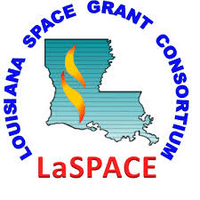Louisiana Space Grant Consortium
REA: Momeni, LaTech

The LaSPACE Research Enhancement Awards (REA) Program is intended to provide support for faculty (and students) at LaSPACE member institutions, particularly aimed at the emerging researcher or an established researcher who wishes to pursue new research directions, for the development of projects, contacts, and collaborations that will bring Louisiana scientists into the mainstream of NASA related research activity, thereby increasing their chances to successfully compete in the aerospace R&D marketplace. As is true with all LaSPACE Programs, minority participation is strongly encouraged. The REA Program is funded by state matching funds, through the Board of Regents Support Fund. The awards are intended to develop expertise and to contribute to research competitiveness. However, awards are not intended purely to support faculty salaries or graduate student stipends. It is anticipated (and strongly advised) that students (both graduate and undergraduate) will be involved in REA projects, but the overriding goal is the development of research capabilities and infrastructure in support of the countrys space/aerospace endeavors. In that regard, contacts/collaborations/ties to NASA centers and NASA researchers are strongly encouraged. The overall goal for this Program is to effectively utilize the resources available through LaSPACE as incentive for faculty and students: 1) to develop research competitiveness 2) to develop new research projects or directions, and 3) to foster collaborations among the campuses, as well as with NASA centers and/or other federal laboratories and with the business/industry community.
REA, Momeni, LaTech, Proposal Abstract: The superior properties of Metal Matrix Composites (MMC), including higher fatigue properties and specific stiffness, makes them an ideal candidate for aerospace applications. Currently, MMCs are successfully utilized in different aircrafts and space structures, missiles, and fiber metal laminates. Although different approaches were pursued to predict the fatigue life of MMCs, such as S-N curves, a reliable predictive tool for fatigue crack growth in MMCs is still missing. Thus, there is an unmet need for high-fidelity analytical tools to design new MMCs. The primary objective of this proposal is to develop the fundamental knowledge of new MMCs and to build a high-fidelity predictive tool for fatigue crack nucleation and growth using the phase-field approach. The developed model will have advantages such as considering the effect of dispersion forces, scale effects, interface energy between crack/matrix/reinforcement, and temperature. The main three steps in this project are developing: (i) infrastructure for establishing simulations directly from experimental measurements; (ii) the phase-filed model; and (iii) the numerical framework for solving coupled phase-field and elasticity/plasticity equations. This project is aligned with our long-term objectives for establishing a strong research program in the field of Materials Genomics. The developed knowledge and tools have implications beyond the aerospace industries, and can include ground transpiration industries, recreational goods, and wear-resistant materials. The results will be disseminated using the PIs developed course, his website, and via scientific demonstrations for K-12 students. The developed model can further be expanded to account for microstructures of matrix/reinforcement allowing us to attract future funding.

